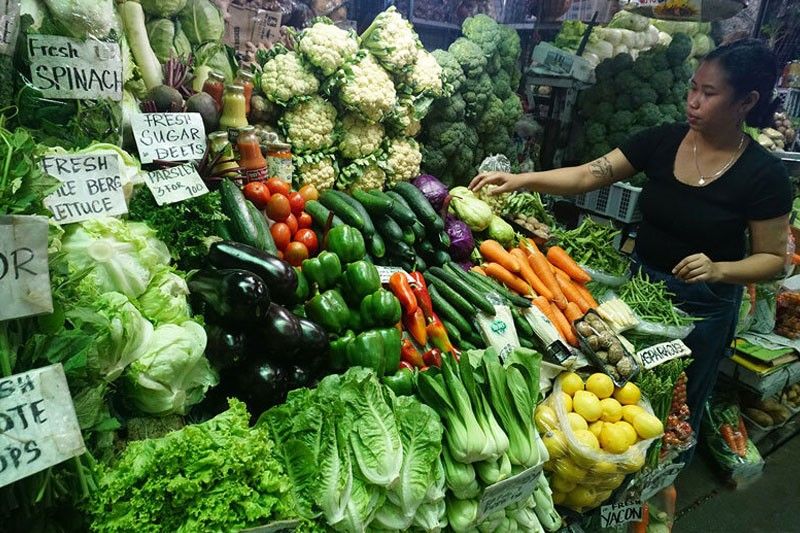Inflation seen easing further

MANILA, Philippines — Economists believe that inflation further cooled for the third straight month in April after easing to a six-month low of 7.6 percent in March from 8.6 percent in February.
Ruben Carlo Asuncion, chief economist at Union Bank of the Philippines, said the consumer price index (CPI) likely eased further to 7.1 percent in April due to lower global oil prices and fears of a possible recession in advanced economies.
“We see a slow burn of the inflation forecasts amid the softer oil/commodity prices abroad, weak dollar and likelihood of an offshore recession, and the key reason is the residual effects of pent-up domestic demand from the middle class and up prone to pay the high inflation on the services CPI, sin commodities and others,” Asuncion said.
He said the government’s liberal import policy on commodities in short supply still has to show or prove that lower priced imports and their huge quantities sourced offshore can lower and eventually anchor food prices.
The Aboitiz-led bank sees broad food prices hitting the low single-digit rate later in the year.
However, the CPI of cigarettes and alcoholic beverages, housing rental, electricity, gas, and others, clothing and footwear, household furnishings, furniture, etc., and restaurants and miscellaneous services may end the year with respective inflation rates exceeding the upper limit of the BSP’s inflation target range.
Asuncion said these commodities account for 39.5 percent of headline CPI.
Most economists believe inflation settled at seven percent in April.
Bank of the Philippine Islands lead economist Jun Neri said the CPI likely eased to seven percent in April from 7.6 percent in march.
“Possibly higher prices of fish, meat, rice, hotel accommodations and restaurant services, housing rentals were drivers for a return to month-on-month CPI increases,” he said.
Michael Ricafort, chief economist at Rizal Commercial Banking Corp., is also convinced that inflation settled at seven percent last month, but cited several offsetting risk factors that could still lead to some pick-up in prices.
These include higher rice prices that account for nearly 10 percent of the CPI basket, higher electricity rates, higher water and other utility rates in recent months as well as higher pork prices due to the African swine fever (ASF).
Ricafort said another risk factor for the coming months is El Niño, especially in the latter part of this year until early 2024, which could reduce food production and supplies, resulting in some pick-up in overall inflation.
Alvin Joseph Arogo, economist at Philippine National Bank, said inflation eased to seven percent because of favorable base effects.
“While oil prices have gone up and the longer lasting effects from last year’s supply shocks still prevail, the headline inflation print will likely be lower than March’s 7.6 percent and this is because of favorable base effects,” Arogo said.
Meanwhile, ING Bank lead economist Nicholas Mapa and China Bank chief economist Domini Velasquez believe inflation eased below the seven percent level in April.
Mapa said inflation cooled to 6.9 percent in April as the Dutch financial giant expects inflation to be sticky but moderate further, barring any adverse supply side shocks.
“Food inflation will remain elevated but at a less pronounced pace. We could also see softer inflation for transportation and utilities. Meanwhile, other services, recreation and other items related to robust demand should report faster inflation,” Mapa said.
Velasquez said there was another steep drop in inflation to 6.7 percent in April from 7.6 percent in March, while month-on-month inflation was likely flat to negative at around -0.1 percent.
Velasquez said core inflation likely peaked at eight percent in March and slowed to around 7.7 percent in April.
“Moving forward, we see upward price pressures still stemming from pending transport fare and wage hikes as well as domestic food shortages. In particular, a pork shortage looms in June due to ASF. Additionally, El Nino, expected to begin in two to three months, may drive up prices of food, water, and energy,” Velasquez said.
As signaled earlier by no less than BSP Governor Felipe Medalla, most economists believe the Monetary Board is likely to pause its tightening cycle this month amid the inflation downtrend.
“We think the negative month-on-month headline and the slowdown in core inflation are sufficient to show that inflation is on a sustained downward trajectory. Hence, we expect the BSP to pause at next month’s meeting, ending its tightening cycle with a 6.25 percent terminal rate,” Velasquez said.
“We believe the BSP will be watching this number closely given their data dependency mantra. A print below seven percent could be enough to elicit a pause form the BSP at the May policy meeting,” Mapa said.
“A meaningfully lower-than-expected inflation in April will increase the likelihood that the central bank may keep the policy rate unchanged at 6.25 percent when monetary authorities have their meeting on May 18,” Arogo said.
However, BPI’s Neri and UnionBank’s Asuncion are not convinced that now is the right time to step on the brakes of the monetary tightening cycle.
“While BSP may decide to pause, this could erode some of the confidence it has regained in recent months. A follow through hike seems more prudent at this point since these tightening actions can be dialed back later on. After back-to-back misses in 2022 and 2023, its best to pause when its clearer that we will meet the inflation target in 2024,” Neri said.
For his part, Asuncion said the BSP may further raise key policy rates by another 25 basis points on May 18, bringing the overnight reverse repurchase rate to 6.50 percent from an all-time low of two percent.
“We continue to expect one last BSP policy rate hike of 25bps in May to 6.5 percent before the pause-and-hold, to enable nominal interest rates to stay relatively neutral or close to the inflation outlook this year running at 6% if not higher,” Asuncion said.
- Latest
- Trending




























